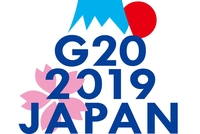The Millennium Development Goals (MDGs) have passed their target year, and are followed by the Sustainable Development Goals. One of the achieved MDG targets was halving the proportion of the Population without sustainable access to safe drinking water. In the course of the MDGs, how and why was the target achieved, and what contributed to the achievement? It was revealed that the major contributors to the achievement of the target were China and India, and that the increase in the proportion of population with access to improved sources was closely associated with economic development in most nations during 1990–2015.
Challenge
The MDG Target 7C-Water, “Halve, by 2015, the proportion of the population without sustainable access to safe drinking water and basic sanitation”, was achieved for the first time in the long history of global targets on drinking water, partially because the targeted water coverage was set at a less ambitious level.
It should also be noted that significant progress in China and India accounted for halving the proportion of people without access to improved water sources, while the other half of the proportion was still left behind. It should be also noted the target on “safe” drinking water was not literally achieved—the proportion of the people with access to “improved water sources” reduced from 24% in 1990 to 11%, less than half, in 2010, however, the indicator of “improved water sources” overestimated the coverage level of “safe” drinking water.
These are the reasons why SDG Target 6.1 was set as “universal and equitable access to safe and affordable drinking water for all.” SDG Target 6.1 is the most challenging target in the history of global safe drinking water targets, because it aims to leave no one behind, and the monitoring indicators are more specific and demanding. Providing service to accessible (located on premises), available (whenever needed), and safe drinking water (free from faecal and priority chemical contamination) to the 2.1 billion people who currently lack such access, and achieving it by 2030, is truly ambitious.
Proposal
How and why MDGs were achieved should be reviewed.
As we enter the new era of the SDGs, it is meaningful to understand how and why MDG Targets (or its monitoring indicator) were achieved or not achieved, in order to derive experiences that could be potentially useful to promote the challenges to accomplish the new SDG drinking water target. A wide variety of factors should have contributed to the achievement of MDG Targets, such as 1.A on poverty, 7C on water, and 7D on slum dwellers; political factors, flows of funds, and internal efforts of individual countries. Better understandings of the causal relationships among these factors and the achievements of global goals should contribute for more effective and efficient policy making.
In particular, whether the synergetic relationship between drinking water access and economic development will be consistently true during the SDGs period should be further studied.
Target level of global goals should be carefully crafted.
The MDG-target setting on water “to halve the proportion of the population without access to safe drinking water” has been criticized for widening disparity between rich and poor countries and leaving behind the most vulnerable group, since member states and donors tend to invest in less vulnerable groups in order to make a progress easily, as ironically called “picking low hanging fruit”. That is the reason why most of the SDGs targets are set based on the idea “leaving no one behind”, and “achieve universal and equitable access to safe and affordable drinking water for all” was set as SDG Target 6.1. However, this is not the first time that 100 % coverage was set in global drinking water target. Actually, the targets have been continually revised over more than half a century, with the targeted water coverage swinging between easily achievable levels and 100% coverage, because WHO considered that targets that were too high or too low would fail to encourage developing countries in their efforts to invest in water service expansion. We should learn from past experiences how to set an appropriate target which stimulates the motivations of member states and other stake holders most.
Appropriate indicators should be designed.
Even though it was the first such target ever achieved in the long history of internationally agreed global targets on drinking water, the simplified monitoring indicator could have led to the mistaken conclusion that the MDG target on “safe ” drinking water had literally been achieved, because the indicator of “improved water sources” overestimated the coverage level of “safe” drinking water. A new indicator for drinking water was introduced for SDG Target 6.1, in order to measure the attributes, such as the quality, accessibility and availability of drinking water, which could not be measured by the previous indicator. As such, indicators to monitor the progress of achieving the targets should be designed appropriately based on past experiences.
References
• Fukuda, S., K. Noda, and T. Oki, 2019: How Global Targets on Drinking Water were Developed and Achieved, Nature Sustainability, 2, accepted.
• Oki, T., S. Yano, and N. Hanasaki, 2017: Economic aspects of virtual water trade, Environmental Research Letters, 12(4), 044002.
• Fukuda, S., M. Murakami, K. Noda, and T. Oki, 2016: How Achieving the Millennium Development Goals Increases Subjective Well-Being in Developing Nations, Sustainability, 8, 189.
• Oki, T. and S. Kanae, 2006: Global Hydrological Cycles and World Water Resources, Science, 313(5790), 1068-1072.
Appendix
This policy brief does not intend to criticize the MDG drinking water target, as some other studies have, for leaving the most vulnerable behind. The significant efforts made by developing countries and donors towards the MDG drinking water coverage target were rewarded with an official announcement of its achievement, and that should help them to maintain motivations for pursuing the SDG water coverage target. It should be also reminded that having a challenging target for global water coverage, such as SDG Target 6.1, could be relevant in that such a target stimulates each country’s motivation and investments.








